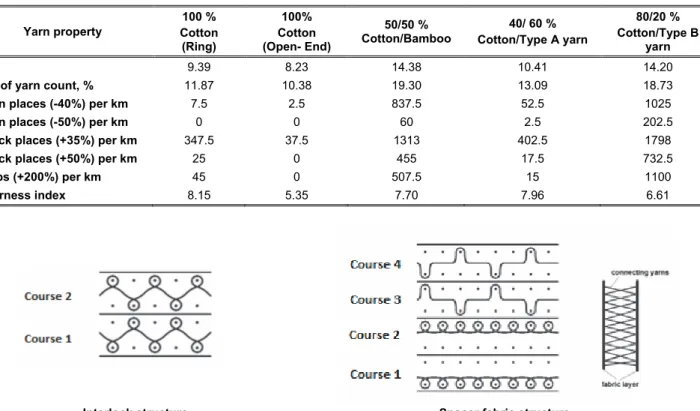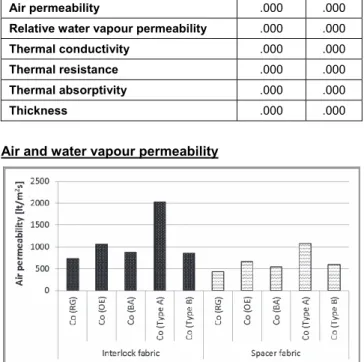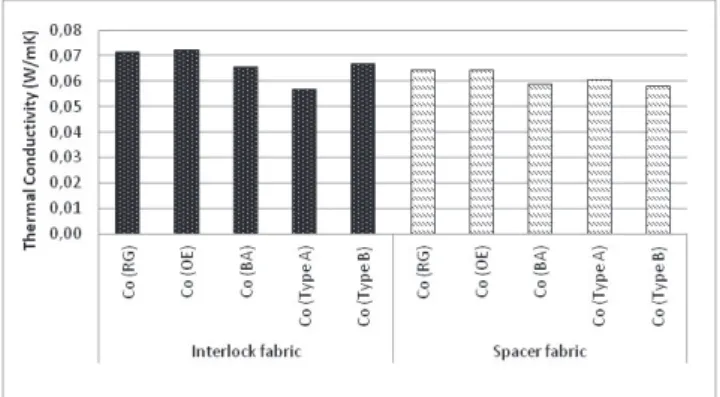INVESTIGATION OF THE PHYSICAL AND THERMAL COMFORT CHARACTERISTICS OF KNITTED FABRICS USED FOR SHOE LININGS
Full text
Figure




Related documents
Bi-layer knitted fabric with tuck stitch on 6 th course and 12 th wale shows lowest moisture management property than other fabrics, because the thickness and
Improving the comfort properties by using PCMs is an effective way to increase thermal comfort at little energy cost, resulting in reduced air conditioning needs and fuel
Table (7) regression equation and correlation coefficient for the effect of air permeability on thermal insulation of fabric at needle penetration depth 13 mm. Regression equation
Neem and Bermuda grass herbal finishes were applied on to the fabrics and the thermo physiological comfort properties of wicking (both ways), water vapor permeability,
On the other hand, single jersey fabrics of both conventional and organic cotton have greater moistures management properties with higher relative water vapour permeability
The fabric samples were evaluated for their comfort and mechanical properties like air permeability, water vapour permeability rate (WVTR), Over all Moisture Management
However, the blended fabrics (50/50 polyester/wool fabric and 63/37 polyester/wool fabric) showed improved water vapour resistance and moisture management performance. Though
With the objective of expanding and enhancing the knowledge of fabrics and coatings that could increase the thermal comfort and overall effectiveness of the knitted fabric